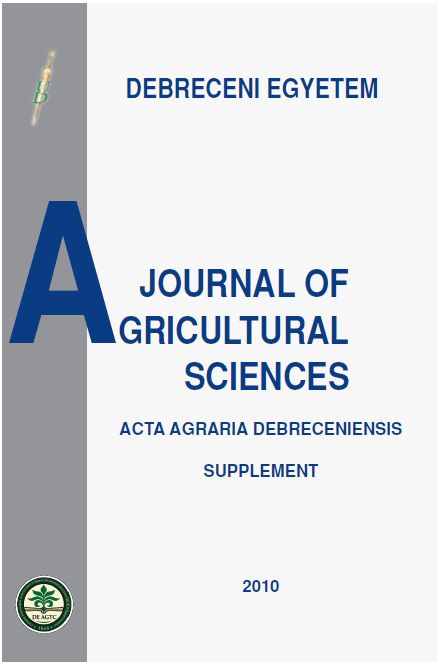Examination of the effects of the cropyear and the nutrient supply on the quality of winter wheat with the help of Győri’s Z-index
Author
View
Keywords
License

This work is licensed under a Creative Commons Attribution 4.0 International License.
How To Cite
Abstract
In the case of winter wheat,the knowledge of several quality features is needed to be able to determine precisely the real quality of the given
wheat. Several systems have been worked out on the qualification of the winter wheat in Hungary and other countries as well. Evaluating the
quality is being made more difficult because the different quality features take part in the development of the quality in different degrees and
the values of the several quality features are in different intervals and these data are different dimension values. On the evidence of the
results, in the case of considering several features,it can be difficult to rank into one concrete quality cathegory. Researchers are trying to
develop complex quality index numbers in order to be able to define the quality more precisely. One of these complex quality index numbers
is Gyıri’s, so called, Z-index.
In three years from 2006 and 2008, we examined the change of the quality features of nine varieties of winter wheat with the help of the
Z-index under the influence of the effects of the different cropyears and the fertilizer treatment. The results show that the Z-index of the
examined varieties of winter wheat were influenced by several factors. Examining the data of the three different breeding years together we
can observe the corrective effect of the different cropyears on the Z-index, and if we examine the three years separately and together, the
differences of the quality features of the different varieties differentiate very well, and with the help of the Z-index the comparison of the
types is easier and perspicuous, and the Z-index represents the different nutrient reactions of the different types as well. On the average of
the three years, the types gave the best results at N120-150+PK nutrient level. Among the nine varieties the best results were given by Mv Suba,
GK Békés and Mv Mazurka in the case of both low and higher nutrient levels.

 https://doi.org/10.34101/ACTAAGRAR/I/8389
https://doi.org/10.34101/ACTAAGRAR/I/8389